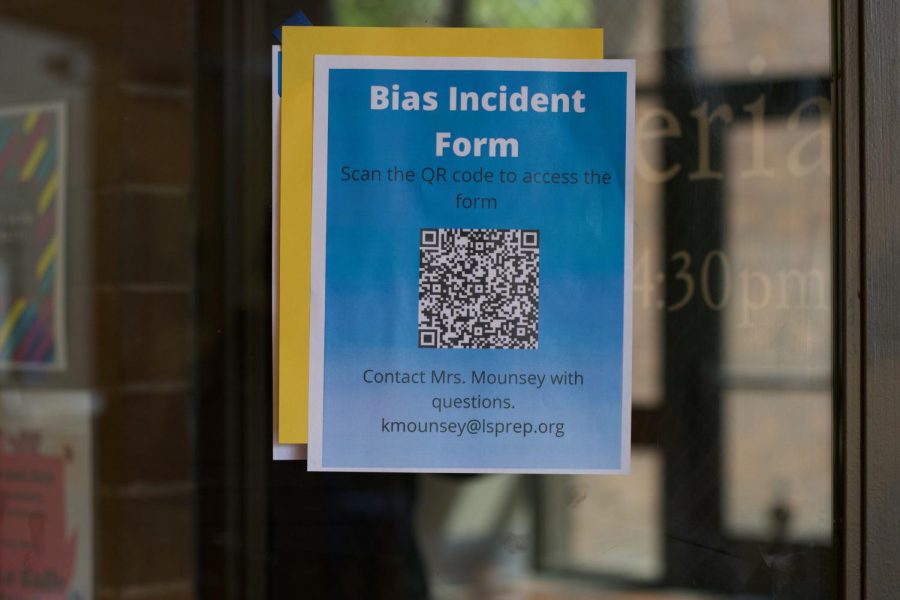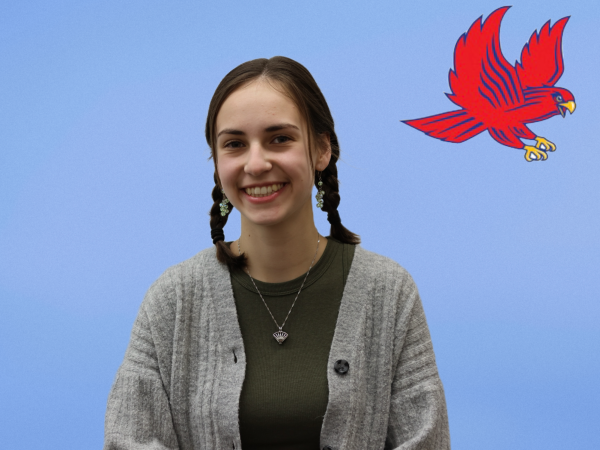Aiming To Further Create “Welcoming and Inclusive” Space, La Salle Introduces Bias Incident Form
In addition to the bias incident form and the equity statement formed earlier in the year, the inclusion committee has also made an equity lens. “It’s really a way to put a diversity and equity lens on decisions that are being made within a school,” Ms. Mounsey.
May 17, 2022
To allow members of the community the opportunity to report incidents of bias, La Salle’s Director of Equity and Inclusion Ms. Kiah Johnson Mounsey and the Inclusion Committee have created a bias incident form where these events can be shared.
“I saw the need for the form where people could fill it out at their leisure and could do it [in] the privacy of their own homes or when they chose to, when they felt most comfortable,” Ms. Mounsey said.
It was within the first couple of months in school Ms. Mounsey became aware of instances of bias happening within the La Salle community and realized “I only heard about some of them,” she said.
According to Ms. Mounsey, the bias incidents have been happening all over. They are in the hall, on the track or field, and in the greater La Salle community. “This isn’t necessarily La Salle students committing these acts, but having these acts committed against them,” she said.
Ms. Mounsey conducted conversations with equity focused professionals and other members of the community to think about what the procedures for reports of bias should look like, and to discuss how to proceed with the people committing these acts, as La Salle has never had a bias report form.
The bias report form will be a way to track trends and make plans in terms of the professional development at La Salle. Ms. Mounsey hopes these forms will also help to start conversations with students and faculty.
“It really is an opportunity to make sure that we are creating a space that is welcoming and inclusive for everyone who’s a part of our community,” Ms. Mounsey said.
Ms. Mounsey also wants to focus on the restoration and education of people involved to prevent these events from occurring in the future.
This form will be open to all members of the La Salle community including students, teachers, parents, and alumni who have witnessed or been on the receiving end of bias or microaggressions.
“Microaggression is any slight against a person based on some certain characteristics,” Ms. Mounsey said. “And sometimes they are done intentionally, and sometimes they are done unintentionally.”
Microaggressions can include things like saying something derogatory in a joking manner, making comments about someone’s physical features, touching someone’s hair, or asking questions like, “Where are you from? Where are you really from?”
“Microaggressions are extremely harmful,” Ms. Mounsey said. “There is this analogy of death by 1,000 paper cuts. If you’re receiving these microaggressions all day, every day, it gets to the point where they are unbearable. So these really need to be taken seriously.”
Ms. Mounsey notes that there is also a difference between an incident type and bias.
According to Ms. Mounsey, an incident type is the action taking place, which can include destruction of property, graffiti, vandalism, intimidation, or verbal harassment.
A bias addresses things such as gender expression, gender, religion, sex, national origin, and disability.
The forms, which are now advertised in hallways around the school, will ask a few simple questions to prompt the respondent to explain the situation they wish to report.
What questions does the form contain?
What type of incident is it?
The form asks the reporter to check a box with the type of incident that best fits the situation and addresses if the incident is some form of bias.
Who are you?
The form asks the reporter who they are in the La Salle community, whether that be student, faculty, or someone else.
Describe the event:
The form asks the reporter to describe what happened, when and where it occurred, who was involved, and if there were any bystanders.
Anonymous?
The form asks if the reporter would like to stay anonymous or share their name. Reports that are submitted anonymously will be documented, but no follow up will happen with the reporter.
Certification:
Lastly, the form asks the reporter to check a box that means they are certifying that the information they submitted is accurate and truthful.
After a report is submitted, the form will go directly to Ms. Mounsey. The reporter will receive a message that their form was received and that they will hear from Ms. Mounsey soon.
The incident will be looked over by Ms. Mounsey and information will be given to the bias team as needed. The bias team will meet to discuss the issue and make a plan based on what disciplinary actions need to be taken and what restoration needs to happen.
The team will work with everyone involved, which Ms. Mounsey said takes time. Once there is a resolution, the person harmed will be contacted again.
Ms. Mounsey said that the data from bias incident reports will be examined to determine if any patterns arise. Staff development will also happen as needed according to the data, whether that be changes that are made in class or conversations that happen with students.
Ms. Mounsey said she feels that continued communication with the reporter or person being harmed is important beyond the initial reporting of bias.
“Trends and research say that it’s probably not the first instance of bias or racism that person has experienced,” Ms. Mounsey said. “[So we] make sure that every person, especially our students and the young people who decide to come to us all feel like they can show up as their authentic selves.”
The forms will be documented in different files on Google Docs and details of plans or conversations will also be added to these documents.
Parents will be involved in the process, especially when a serious situation has taken place. Parents are also welcome to fill out the form if they witness or are subject to an incident of bias themselves.
“We always contact the parents, they are our partners,” Ms. Mounsey said. “And we want to work together and support them too. It’s hard to have your child deal with something very difficult.”
After the form was presented to the student body, there were concerns of the possibility that reports containing false information could be submitted.
In response to these concerns, Ms. Mounsey said, “I always give people the benefit of the doubt and hope that people are going to do the right thing.”
This is why at the end of the bias incident form, there is a question to certify that the information shared is as accurate as possible, she said.
“We will use our discretion as we are reviewing these forms and if that happens, we’ll cross that bridge when we get there,” Ms. Mounsey said. “If people are using this in a way that is unsavory, if they are misusing it then we’ll have to ask why? Why is that person or group of people doing that?”
As for the future of the form, Ms. Mounsey is prepared for things to change and evolve as needed. Ms. Mounsey said she wants the form to be available at home, and is thinking of making it accessible through the La Salle website.
Ms. Mounsey says while she hopes the form will not be a permanent thing at La Salle, “there’s really no reason, at this point, for it to go away,” she said.
“We are committed to being a campus that is safe [and] welcoming,” Ms. Mounsey said. “It’s a place where people can show up with their many different identities and feel like they are safe. And hopefully we’ll be at a point where we don’t need this form or it’s not used very often.”





